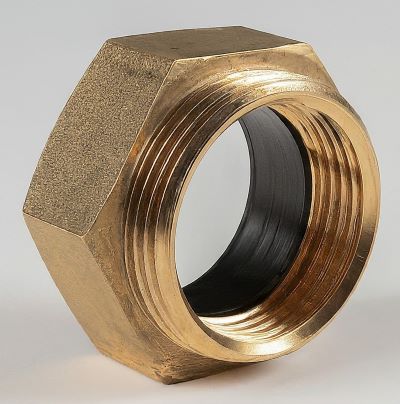Ever tackled a project that involved hoses and ended up battling leaks or frustrated by a stubborn connection? Push-on hose fittings offer a convenient solution, but achieving a perfect seal requires more than just pushing the hose in.
Here, we’ll unveil the secrets to flawless push-on hose fitting installations, ensuring your project runs smoothly and leak-free.
Understanding Push On Hose Fittings
Push-on hose fittings, also known as barb fittings, are a popular choice for connecting hoses due to their simple design. They consist of a barbed fitting with a tapered end that inserts into the hose.
These fittings come in various materials like nylon for general use or brass for added durability in demanding applications. They also come in a range of sizes to match different hose diameters.
Secrets to Perfect Push On Hose Fittings
Creating a secure and leak-proof connection with push-on fittings involves a few key steps:
Preparation:
➡️ Matchmaker, Matchmaker: It all starts with choosing the right fitting size. The fitting’s barb diameter should match your hose’s inner diameter for a snug fit. Using a mismatched size is a recipe for leaks.
➡️ Clean Cut: Ensure the hose end is clean, free of debris, and cut squarely. A dull or uneven cut can compromise the seal and lead to leaks. Consider using a sharp hose cutter for a clean finish.
Fitting the Hose:
➡️ Lube it Up (Optional): For some fittings, especially those made of nylon, using a light coat of silicone lubricant can ease insertion and prevent the hose from getting damaged. However, this isn’t always necessary, so check the manufacturer’s recommendations for your specific fitting.
➡️ Push it Real Good: With the hose end prepared (and lubricated if needed), insert it firmly and fully into the fitting until you hear a click or feel a positive stop. This indicates a secure connection.
Securing the Connection (Optional):
➡️ Extra Security: While some push-on fittings create a tight seal on their own, certain applications might benefit from added security. Depending on the fitting type, you can use clamps or locking mechanisms for peace of mind in high-pressure or critical applications.
Following these steps ensures a proper seal. Skipping any of them can lead to leaks, blow-offs, or even system failure. Never forget that preparedness makes all the difference!
Common Mistakes to Avoid
Even with the best intentions, mistakes can happen. Here are some common pitfalls to avoid when using push-on hose fittings:
➡️ Wrong Size, Big Problems: As mentioned earlier, using the wrong size fitting is a guaranteed leak waiting to happen. Double-check your measurements!
➡️ The Cut Matters: A ragged or uneven hose end won’t create a proper seal. Invest in a good hose cutter and ensure a clean, square cut.
➡️ Forget the Lube (When Needed): Skipping lubrication on specific fittings can make insertion difficult and potentially damage the hose. Follow the manufacturer’s instructions.
➡️ Halfway There Isn’t Good Enough: Not pushing the hose in fully can lead to leaks. Make sure you hear a click or feel a positive stop for a secure connection.
➡️ Clamps of Fury: Over-tightening clamps can damage the hose. Tighten them just enough to secure the connection without crushing the hose.
By being aware of these common mistakes, you can ensure a smooth and successful installation.
Additional Tips and Considerations
For a truly flawless connection, consider these additional factors:
➡️ The Right Hose for the Job: Choose a hose material that can handle the application’s pressure and temperature requirements. Don’t use a garden hose for your high-pressure air compressor!
➡️ Read the Manual: Manufacturer instructions are your friend! Always refer to the specific fitting’s recommendations for proper installation and any special requirements.
➡️ Regular Check-Ups: Inspect your push-on connections regularly for signs of wear, damage, or leaks. Larger issues later on can be avoided with early discovery.
➡️ Know Your Limits: Push-on fittings are convenient, but they may not be suitable for all applications. For very high-pressure systems, consider using a different type of fitting with a more secure connection method.
Frequently Asked Questions (FAQ)
Q: What type of lubricant should I use?
A: For nylon fittings, a light coat of silicone lubricant can be helpful. However, always consult the manufacturer’s instructions for your specific fitting. Some materials may not require lubrication at all, and using the wrong lubricant could damage the fitting or hose.
Q: How often should I inspect push-on connections?
A: The frequency of inspections depends on the application and criticality of the system. For critical applications or those exposed to harsh environments, regular inspections (e.g., monthly) are recommended. For less critical applications, visual checks every few months might suffice.
Q: When should I consider using a different type of fitting?
A: Push-on fittings are generally not recommended for extremely high-pressure systems or applications with excessive vibration. In such cases, consider using a more secure fitting type like crimped or welded fittings for optimal performance and safety.
Conclusion
By following these secrets and keeping these tips in mind, you can achieve perfect push-on hose fitting installations every time. Remember, a proper connection ensures a leak-free and reliable system.
So, the next time you tackle a project involving hoses, put these secrets to the test and experience the satisfaction of a job well done!
Post time: Jul-04-2024


